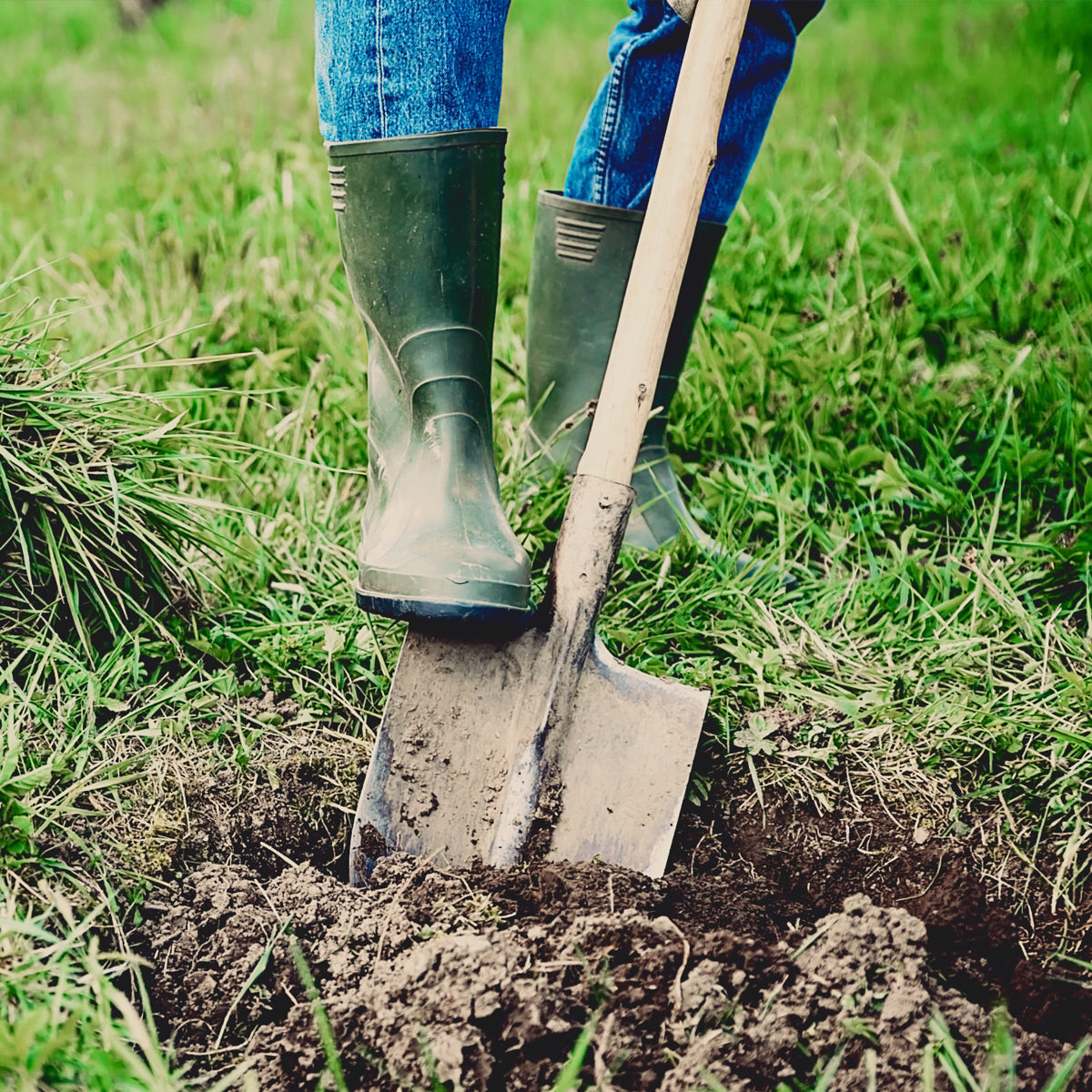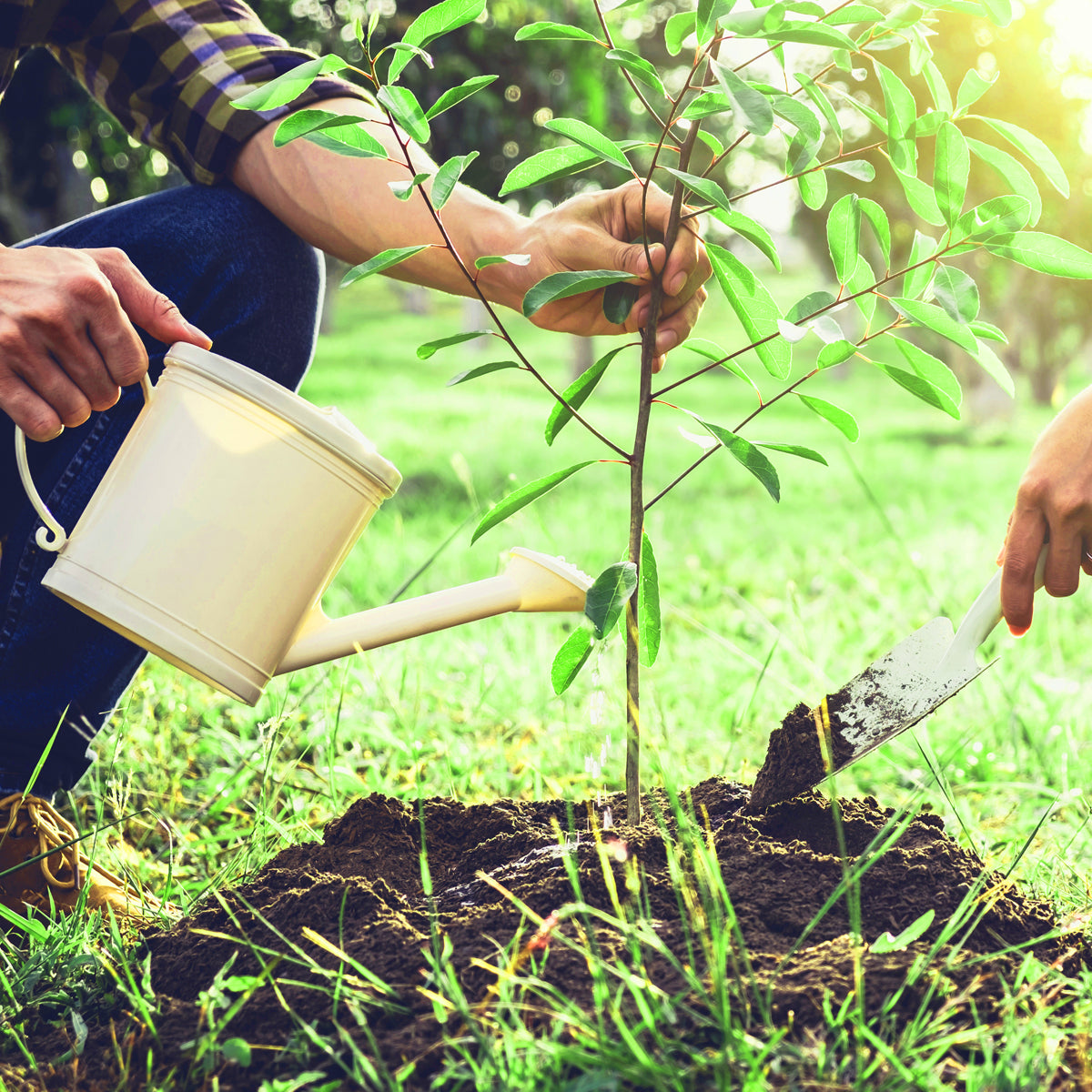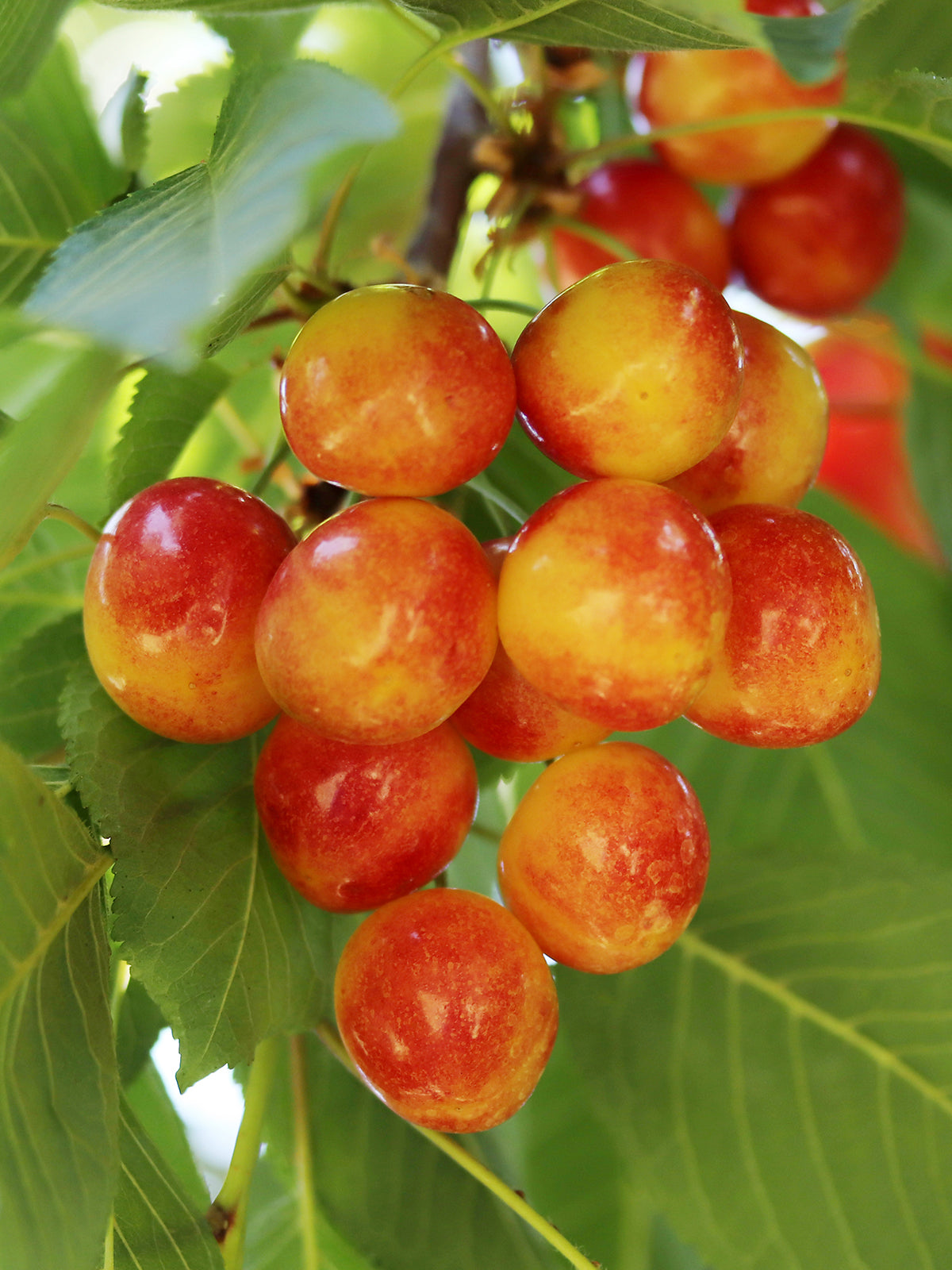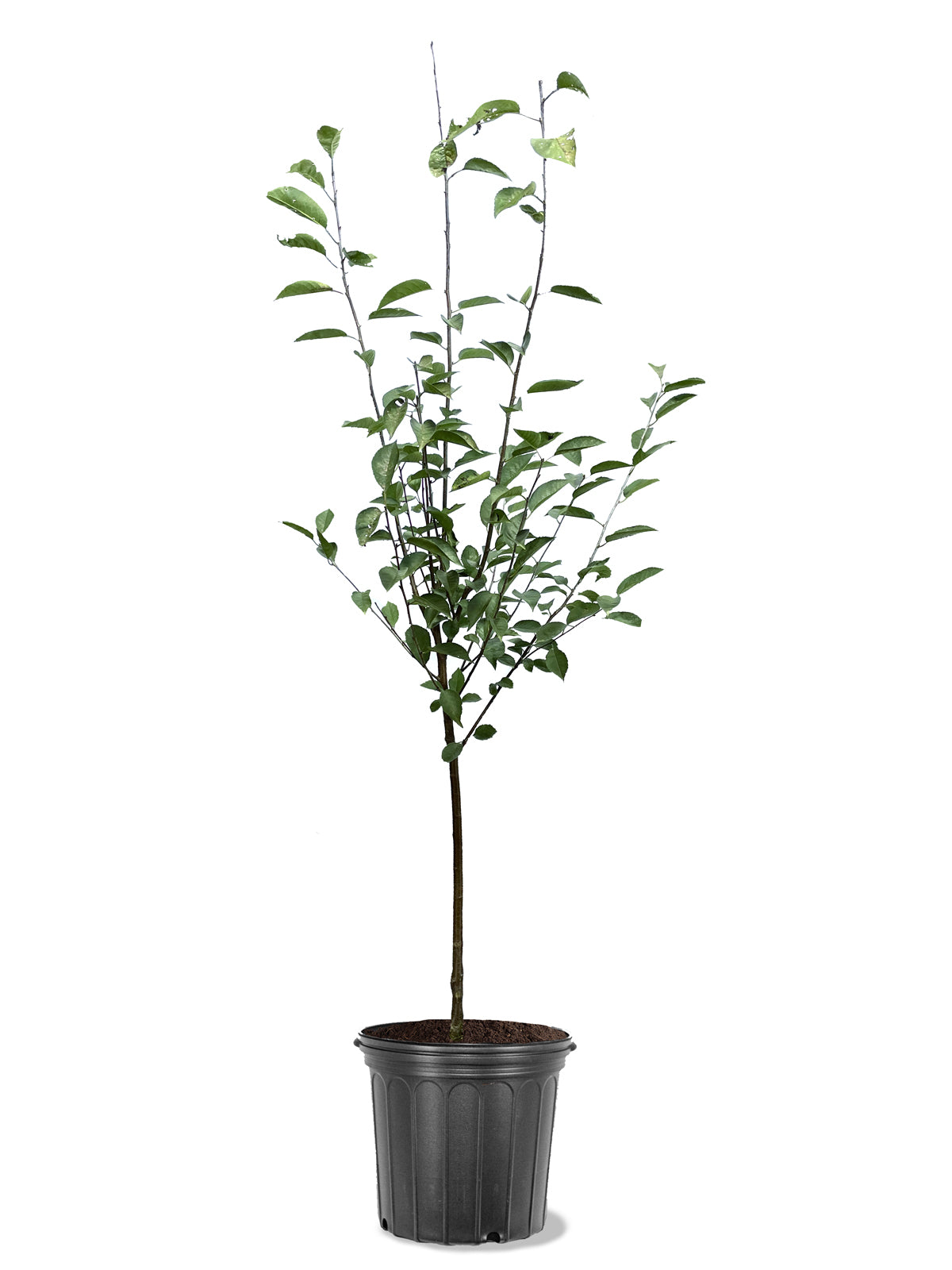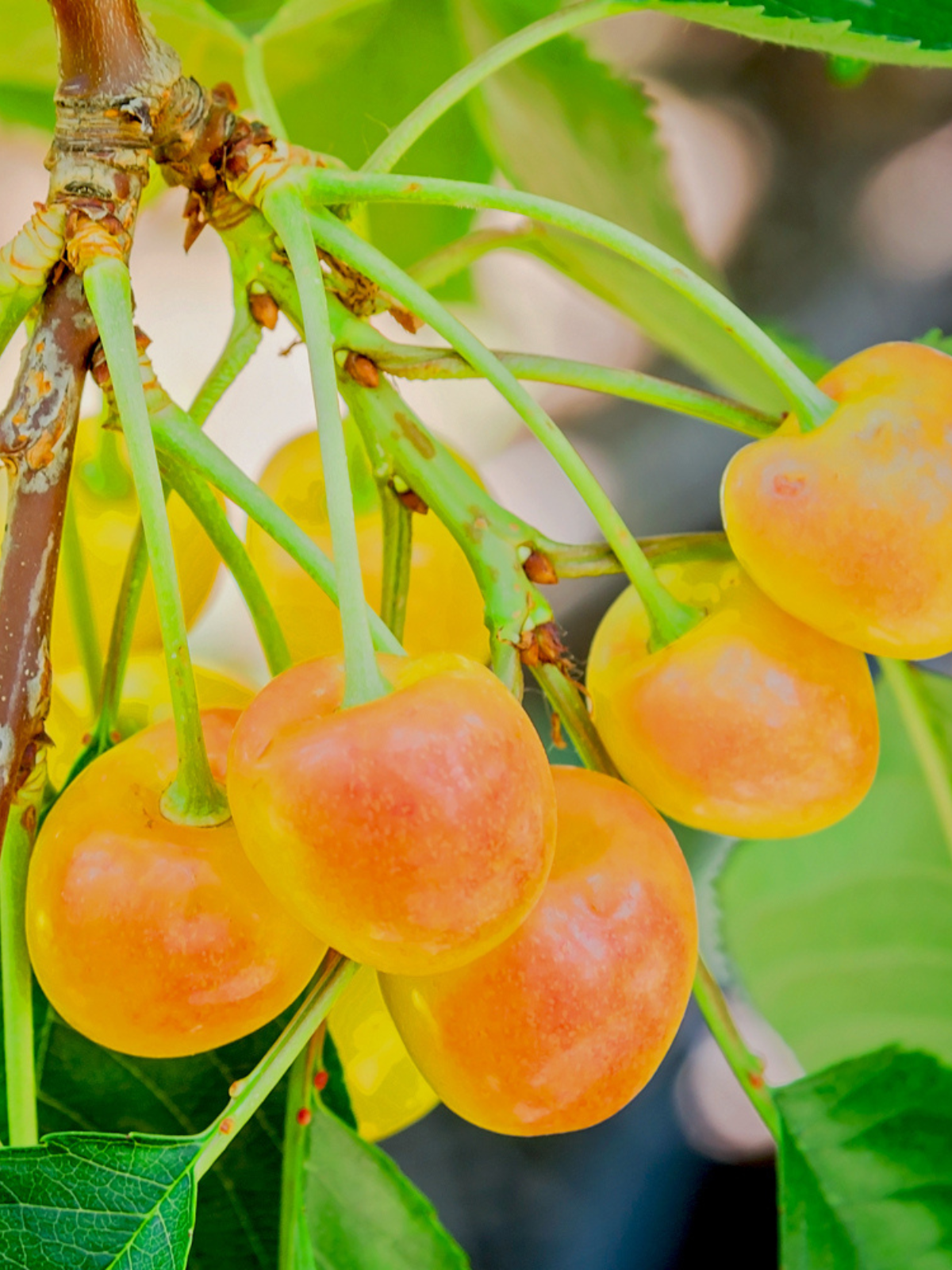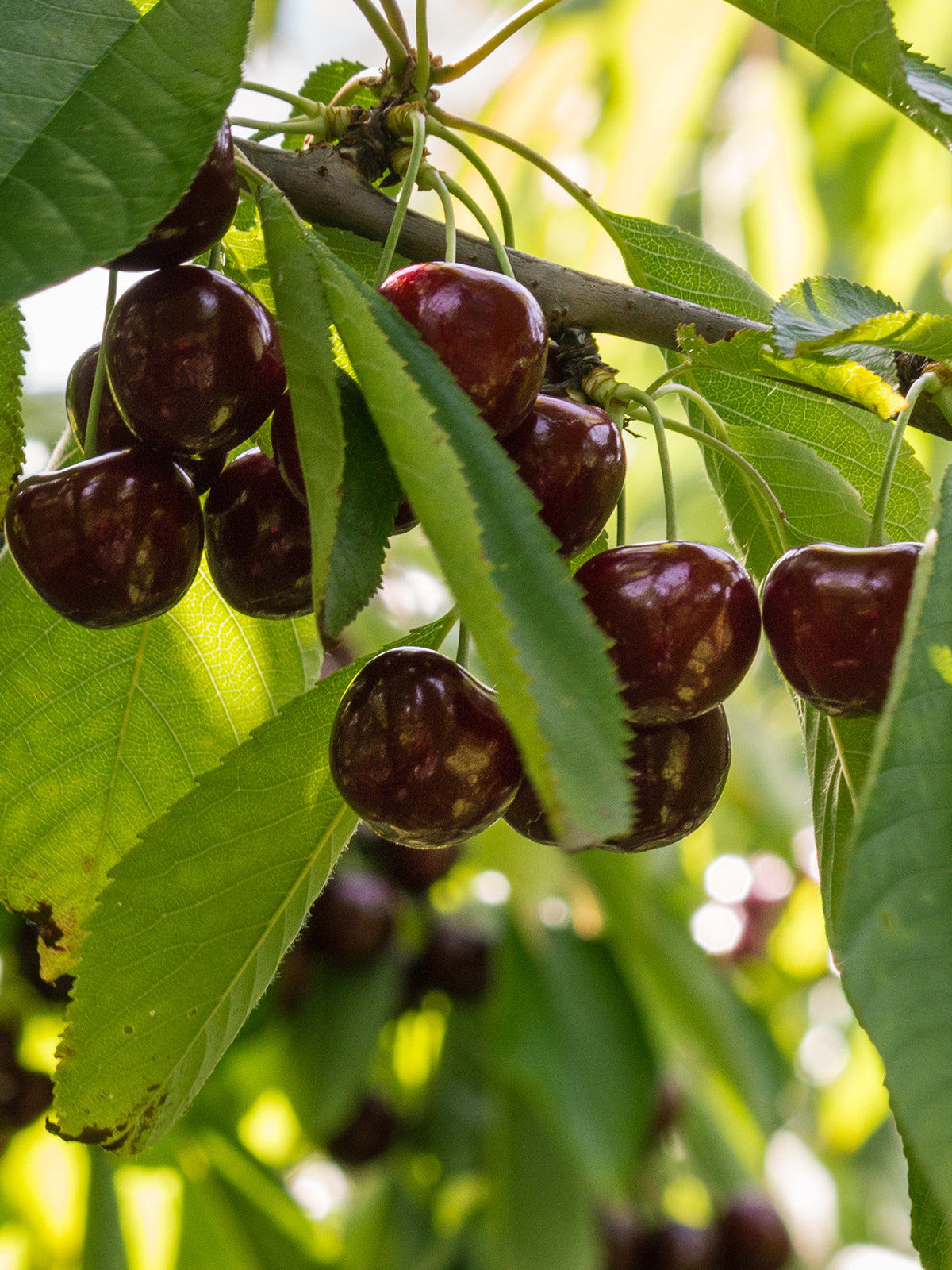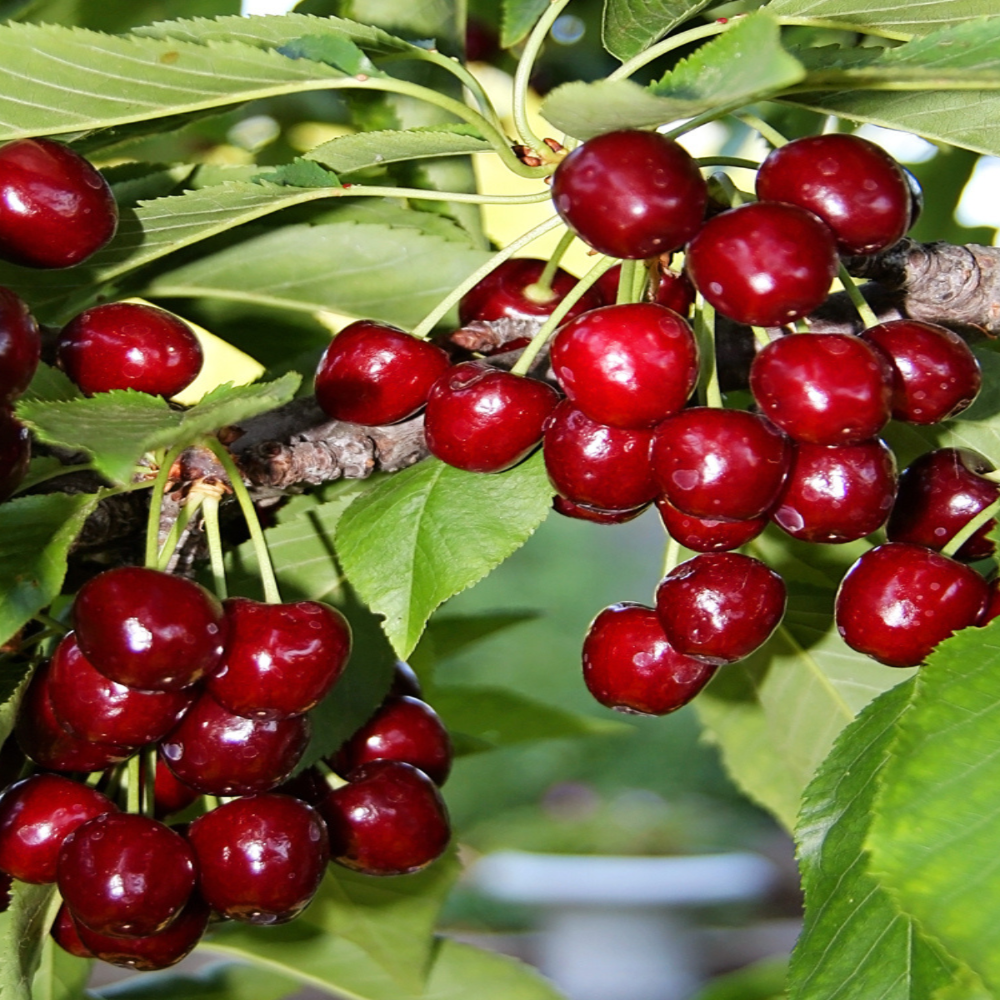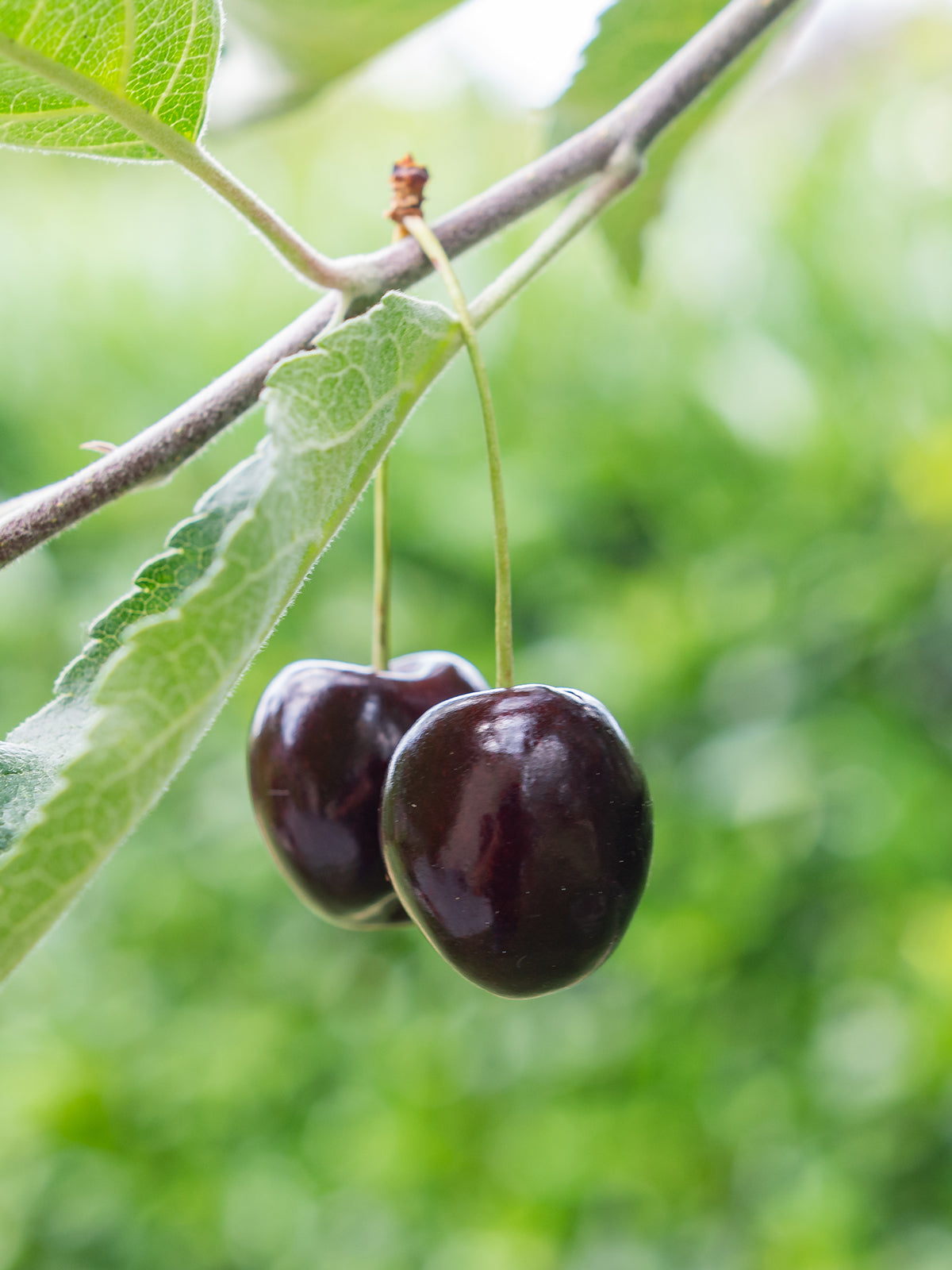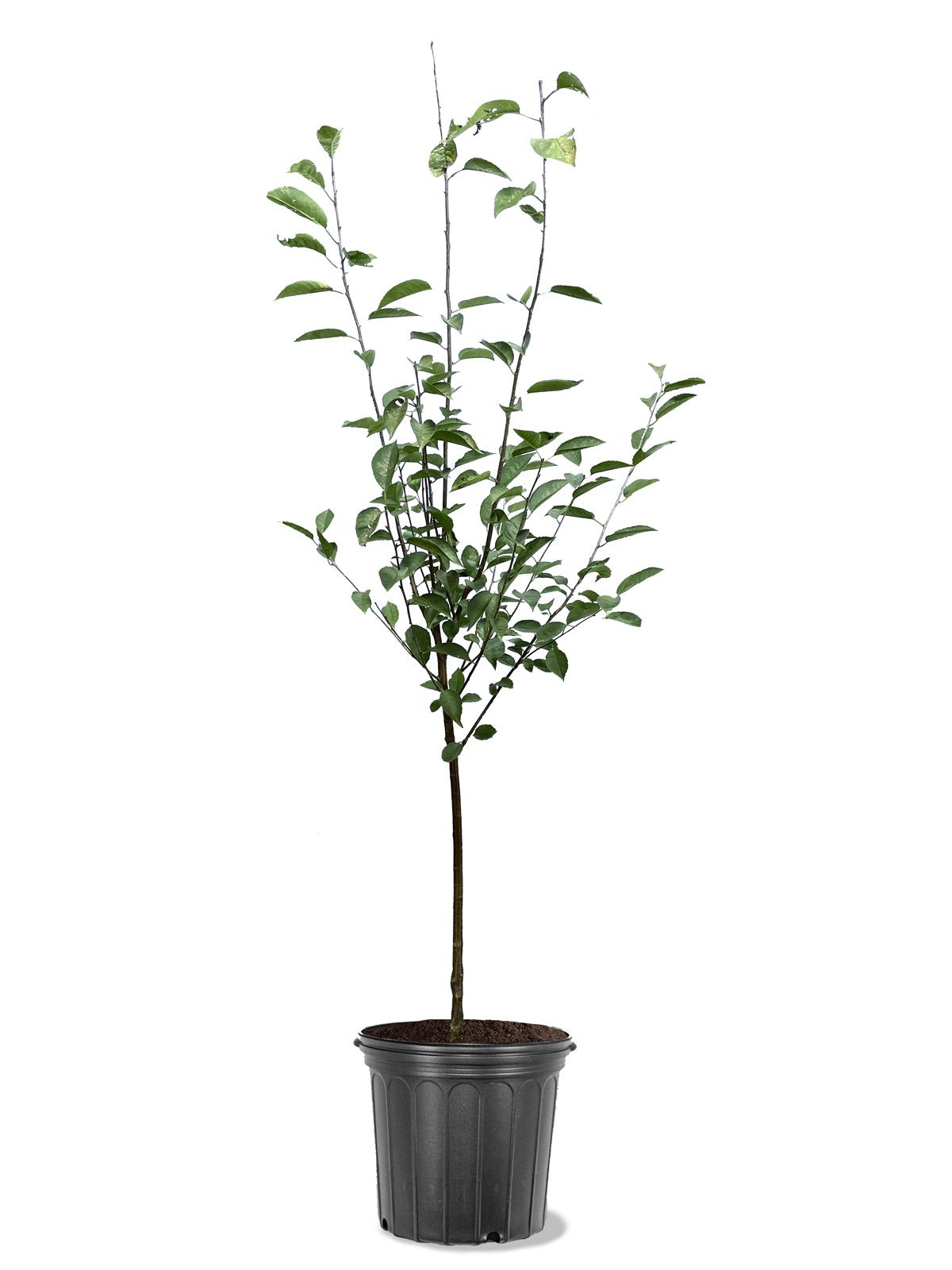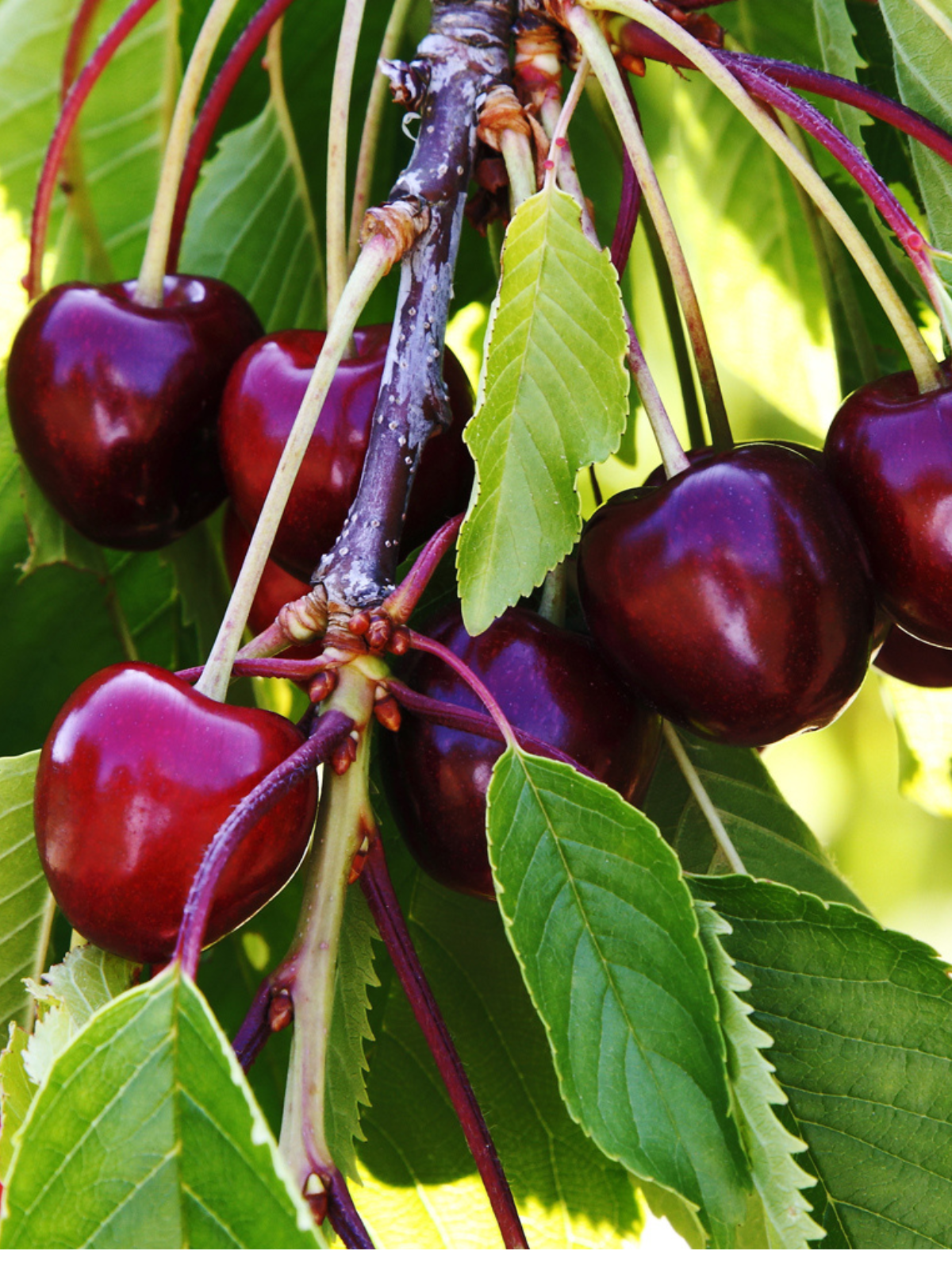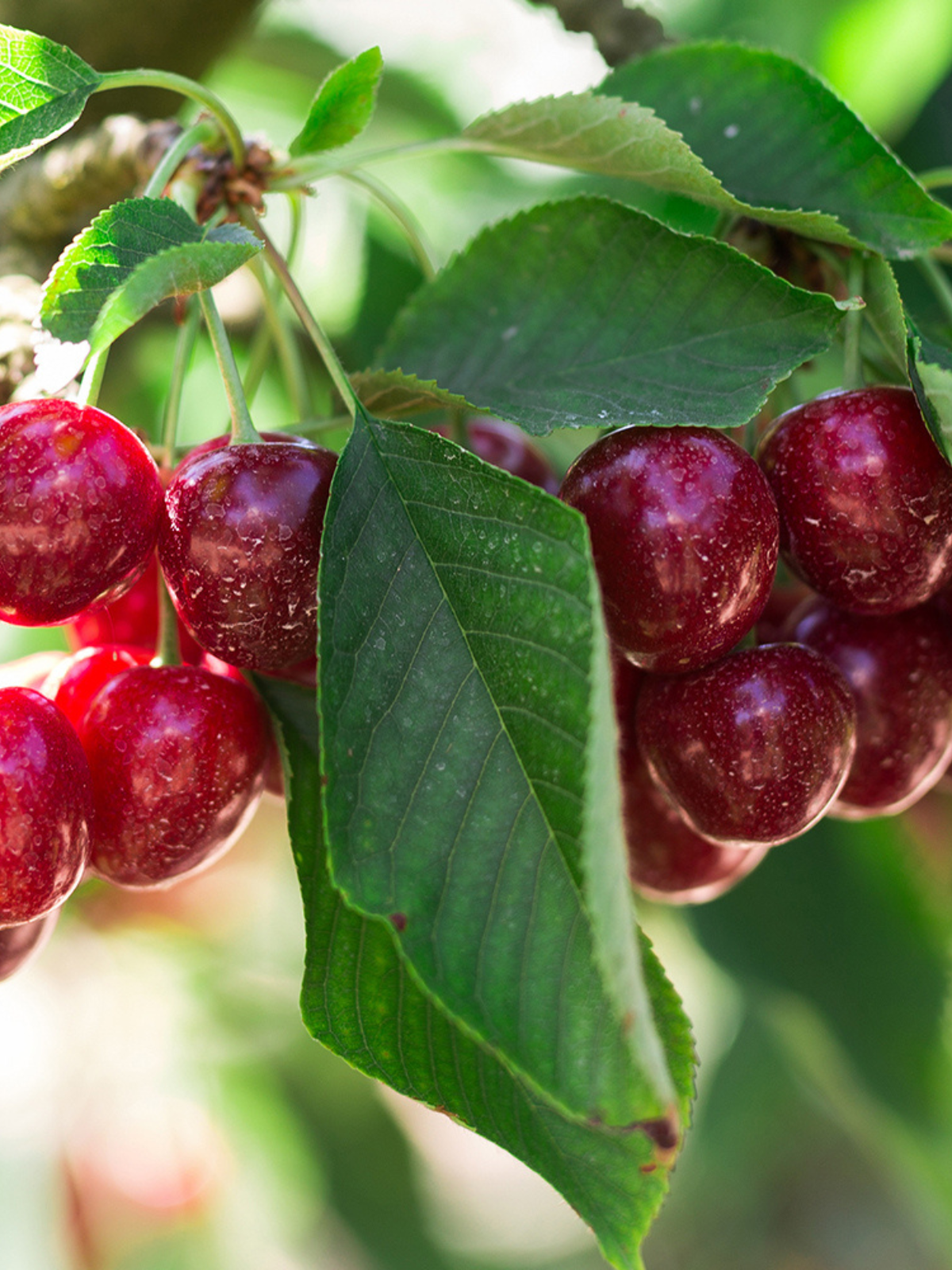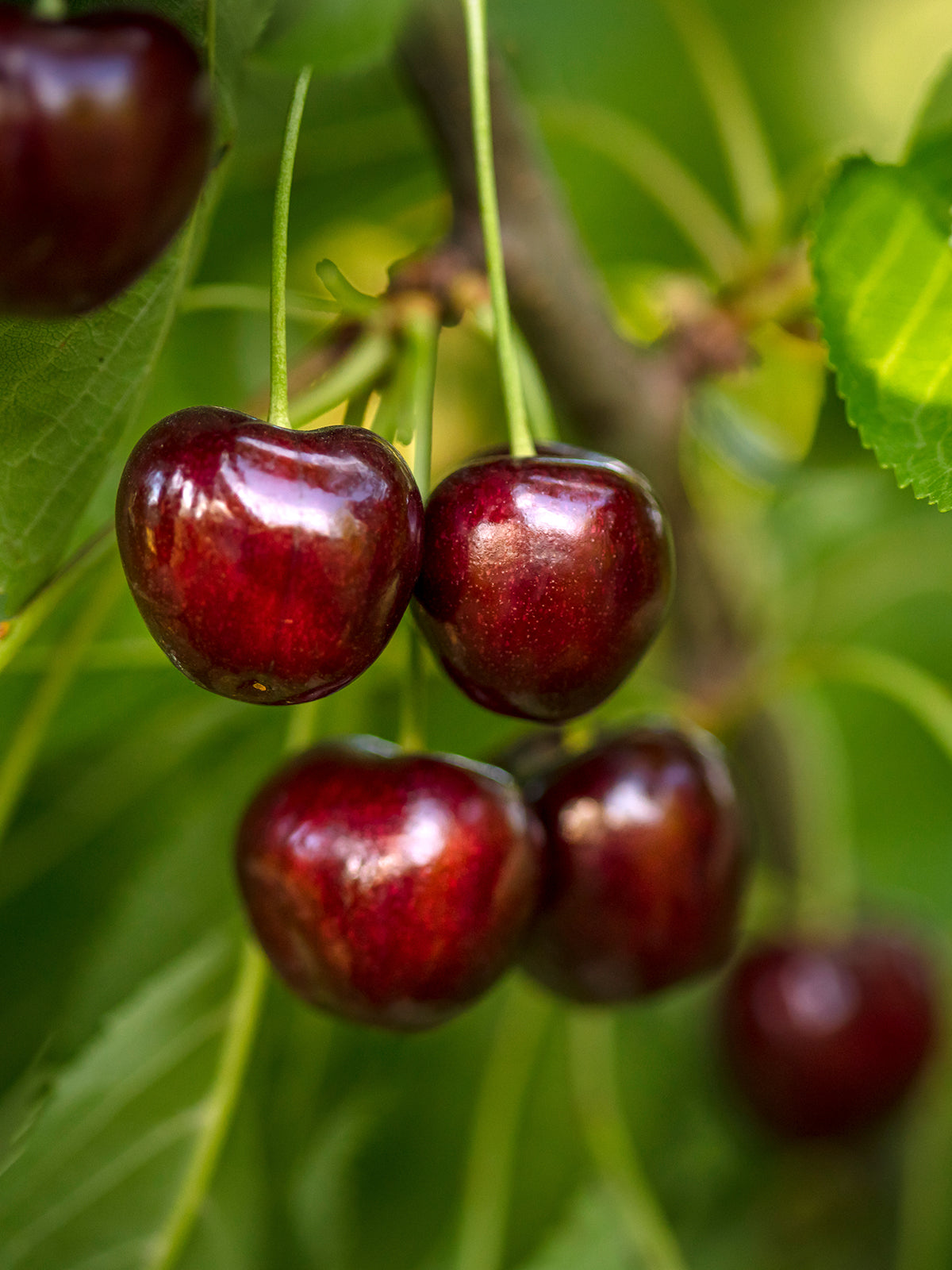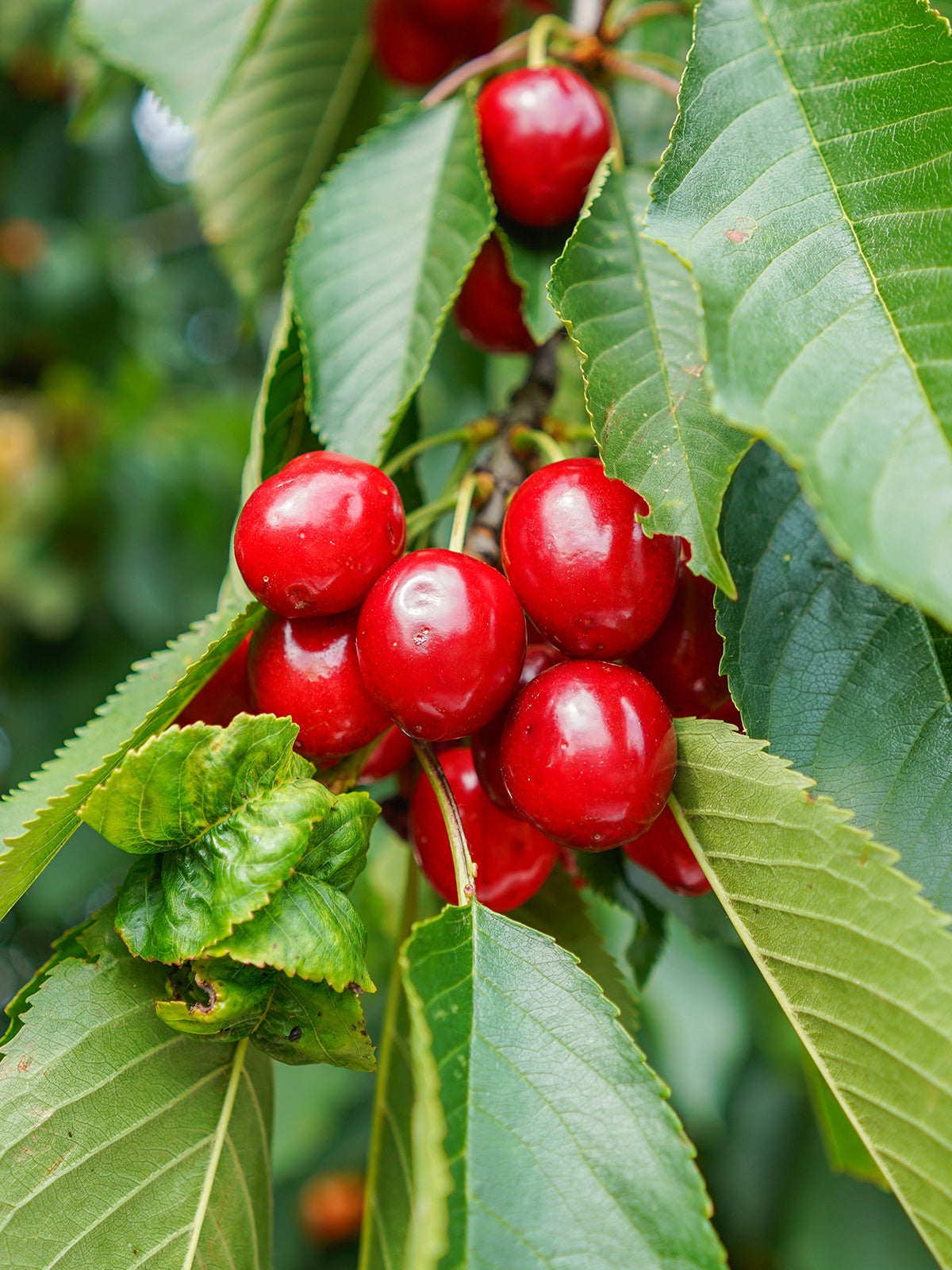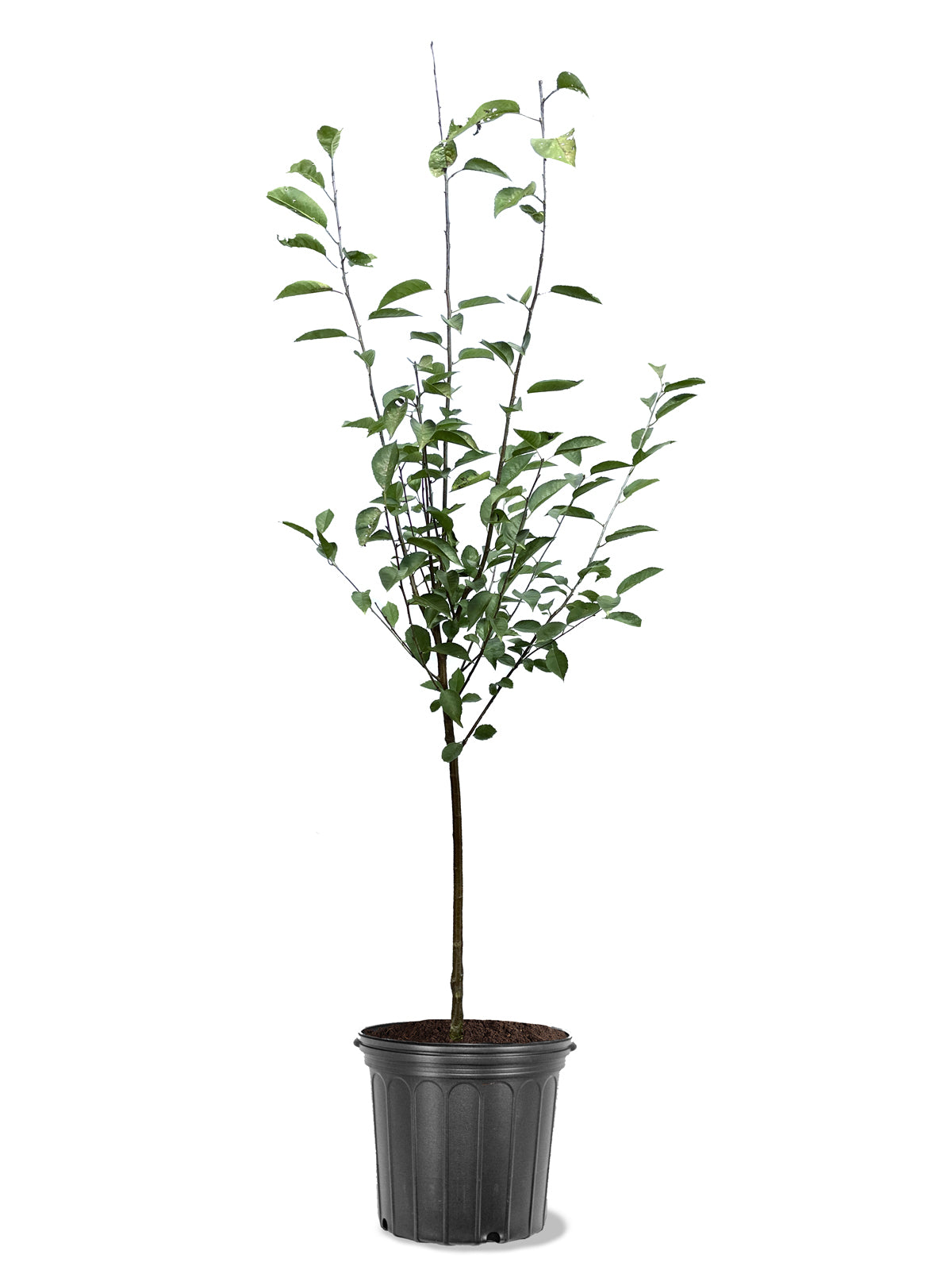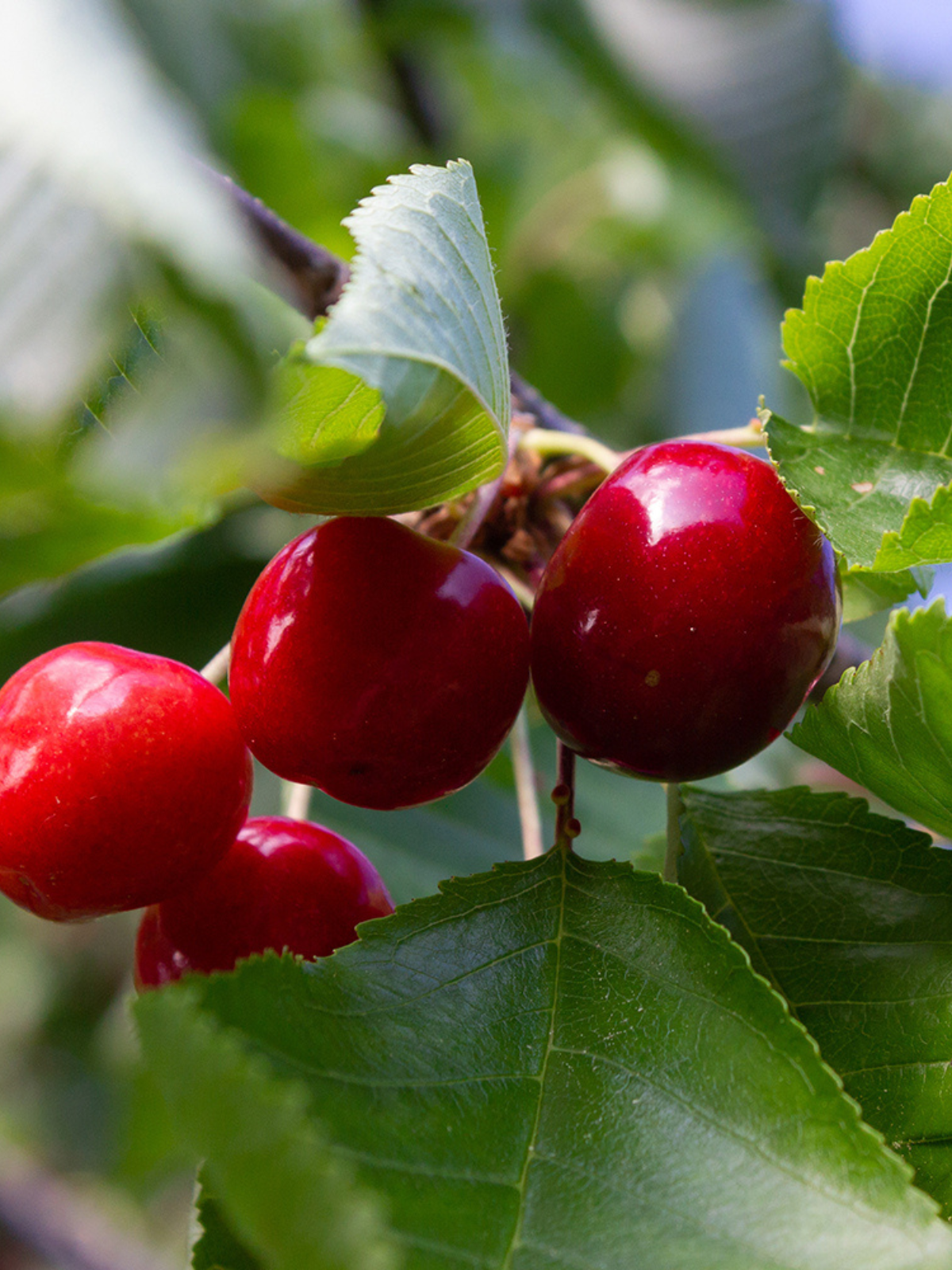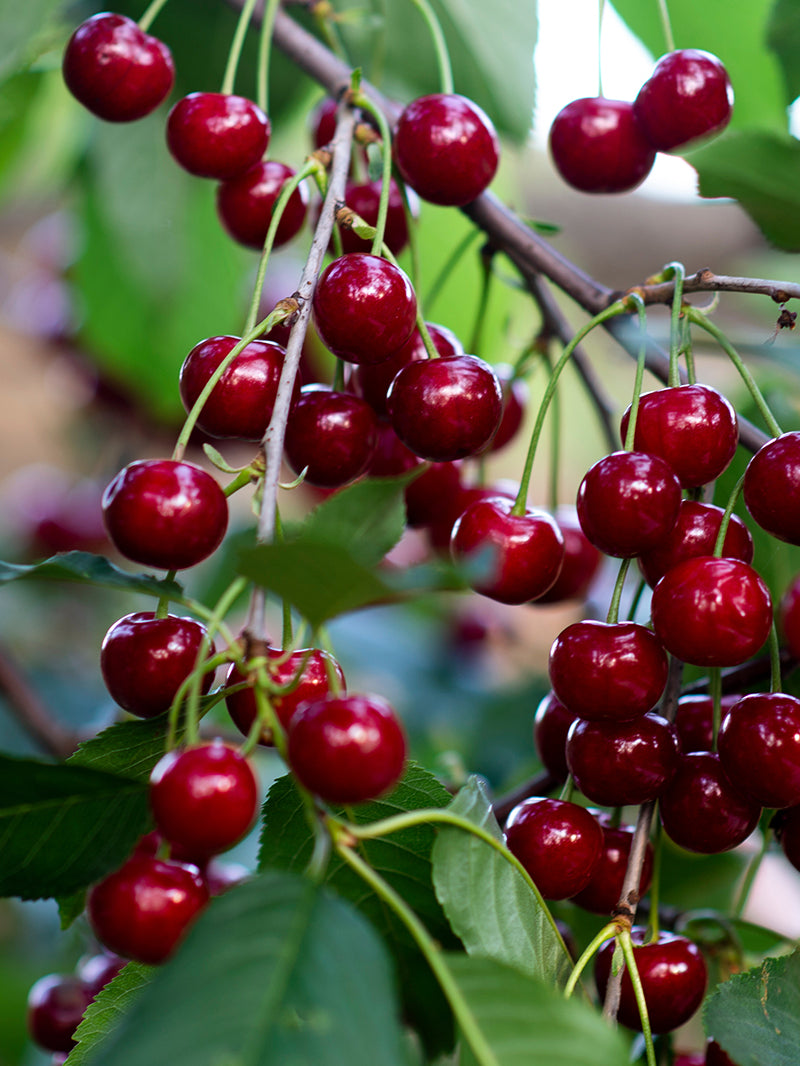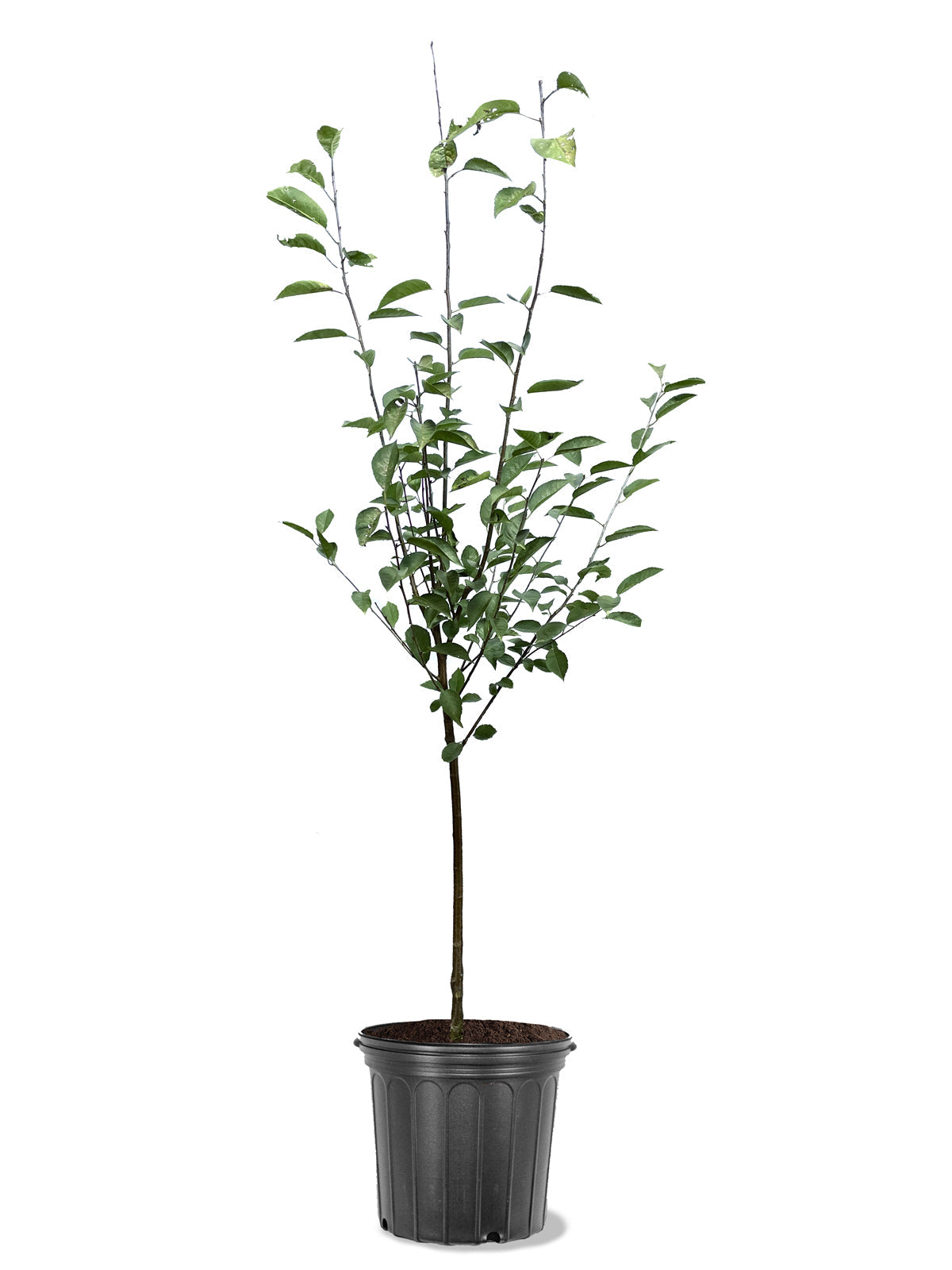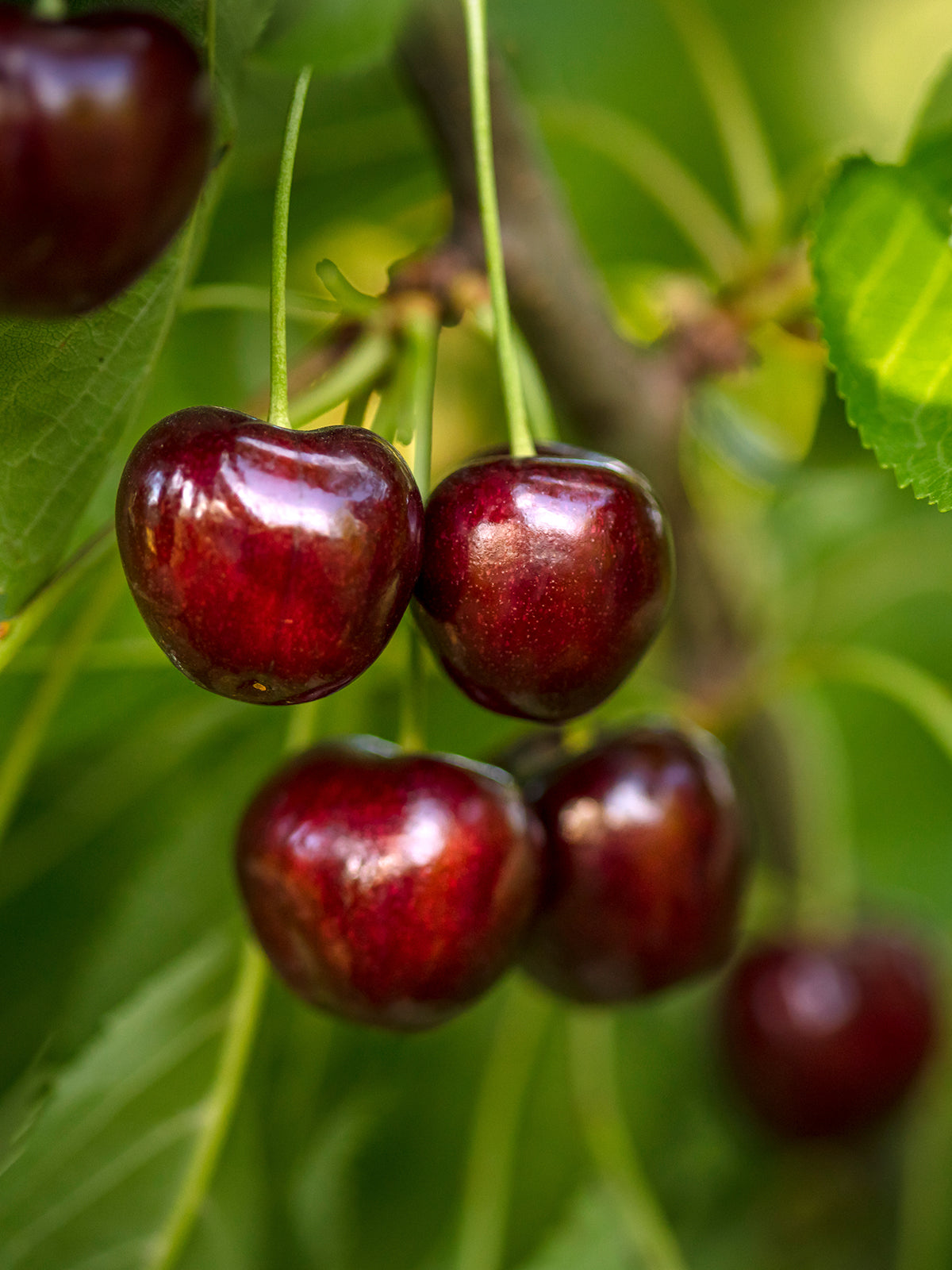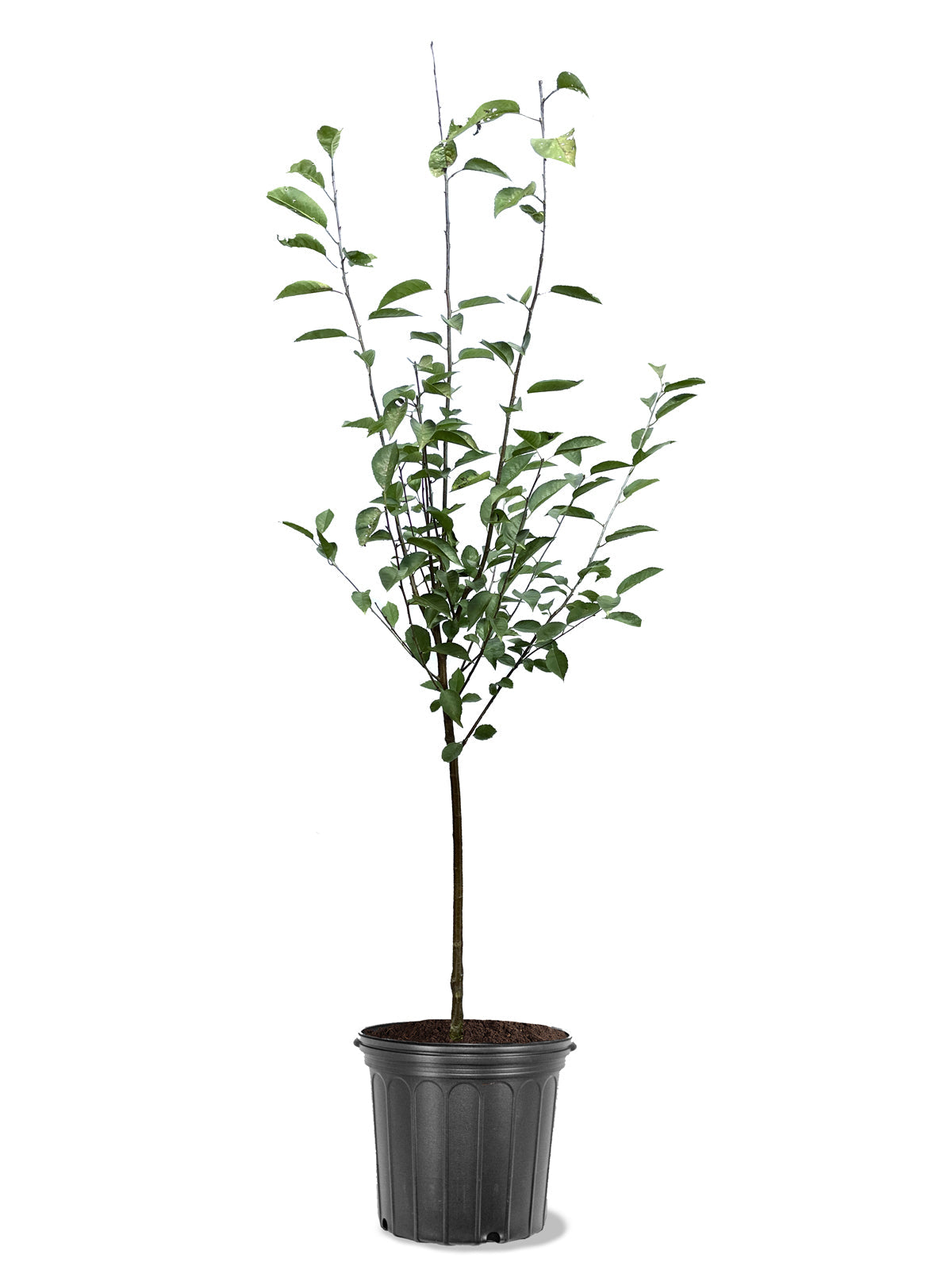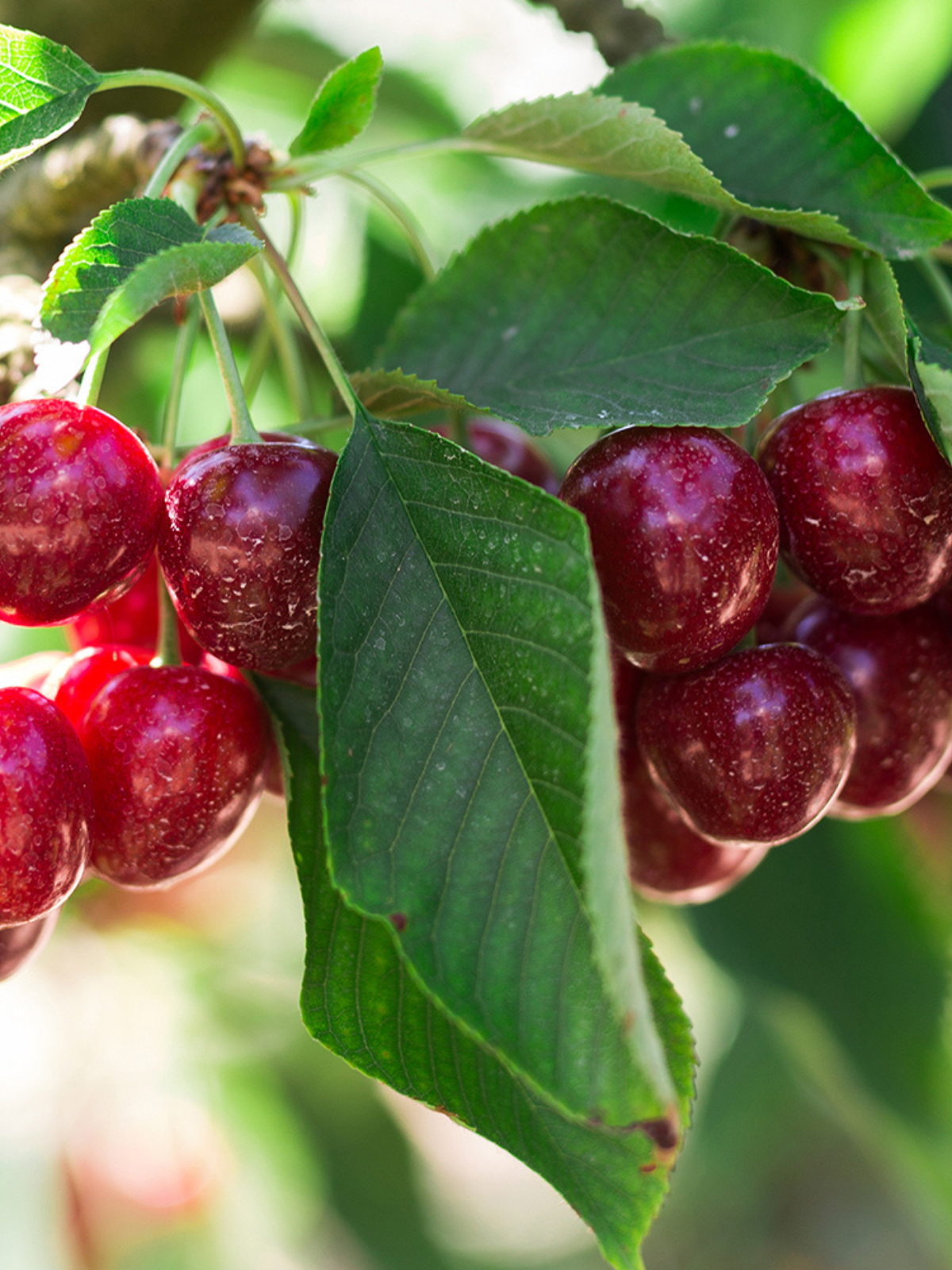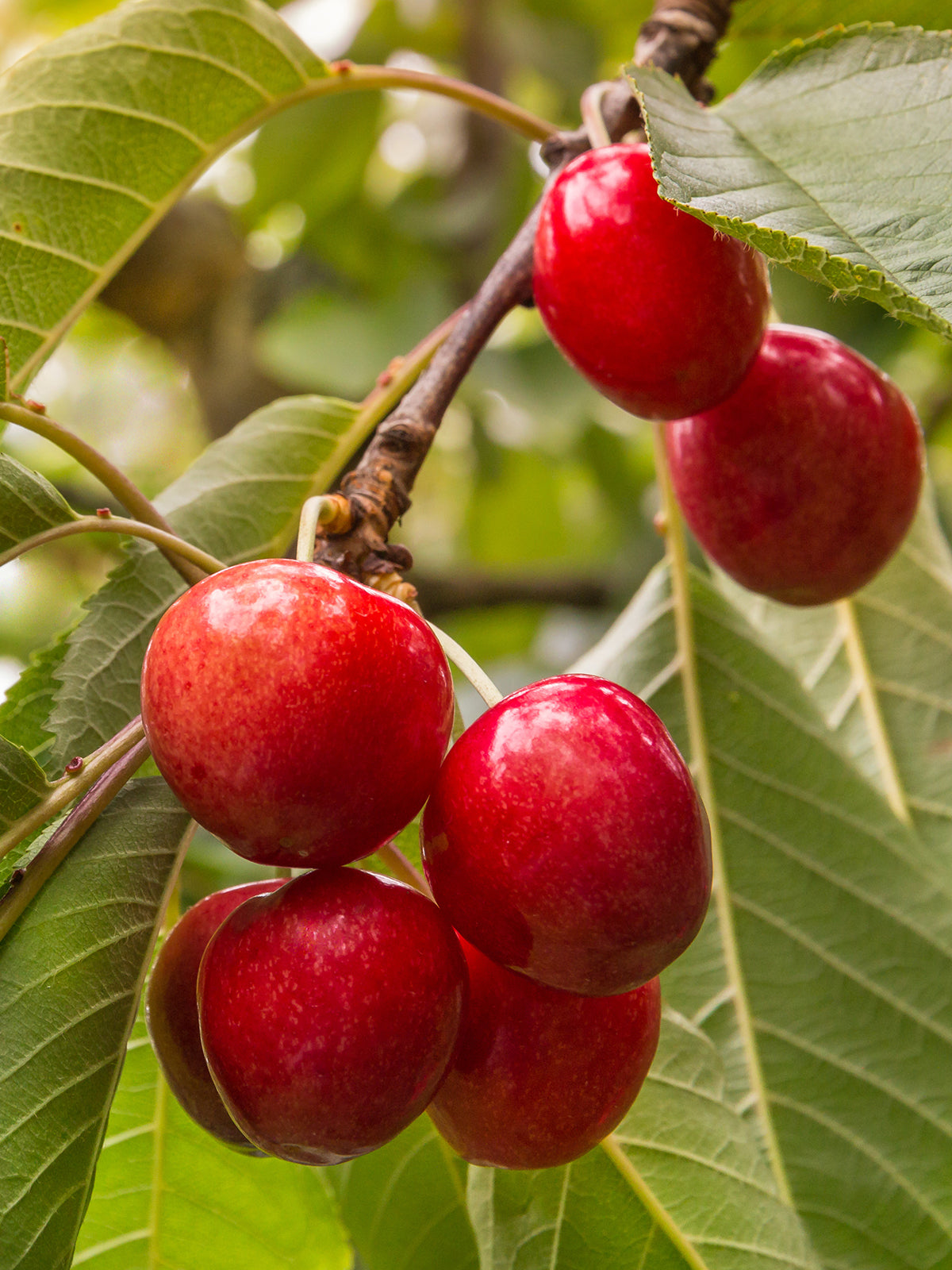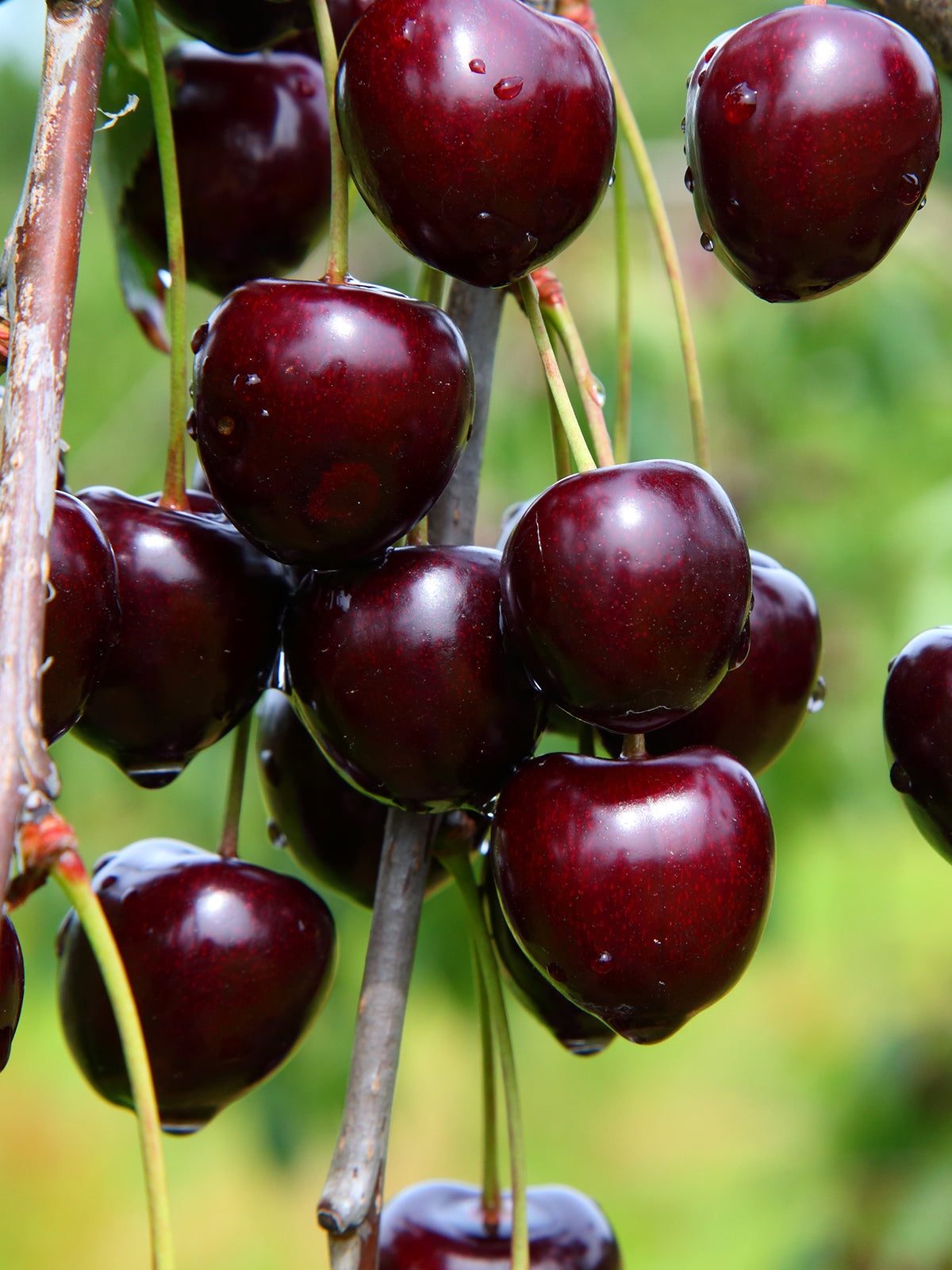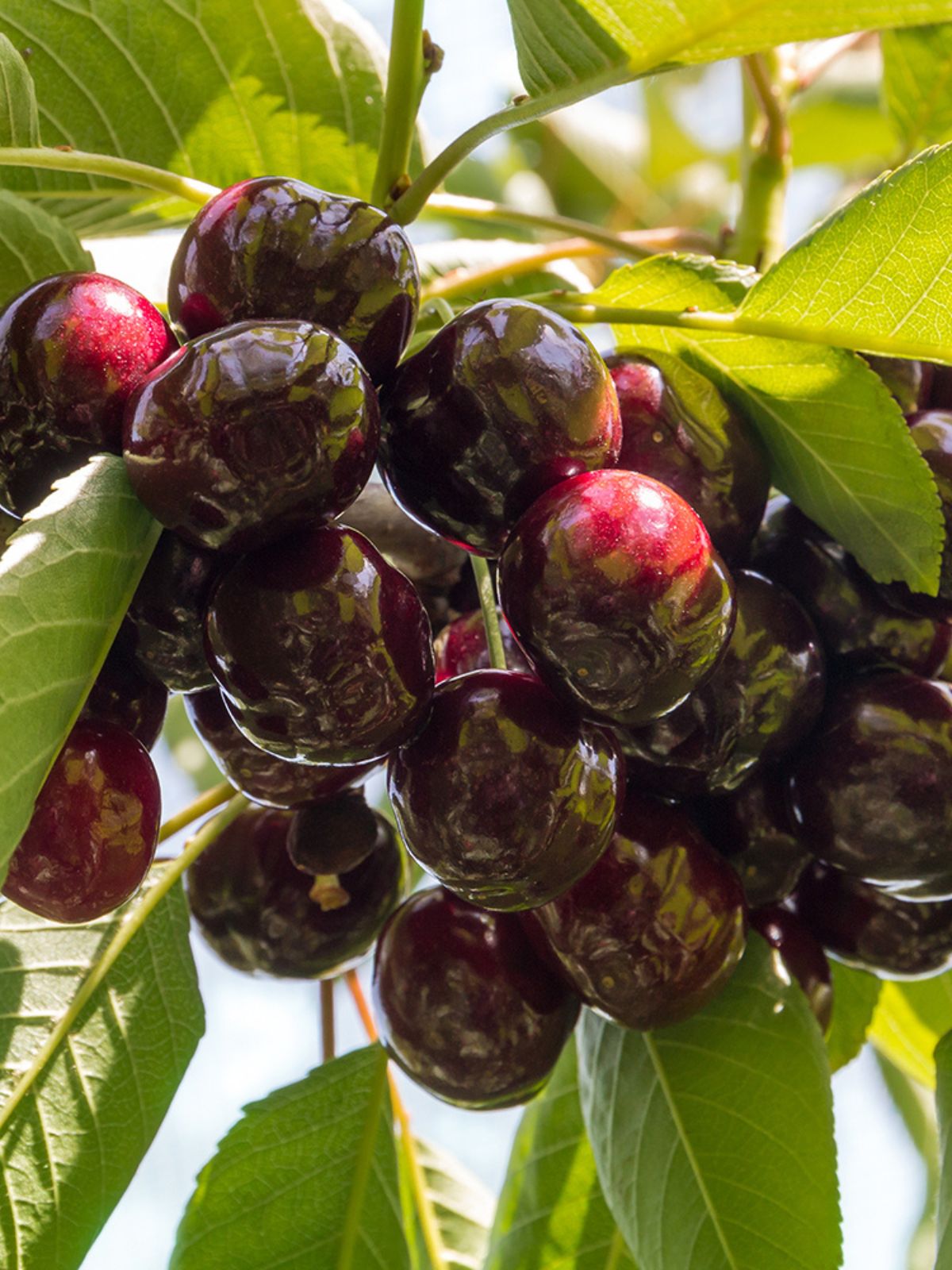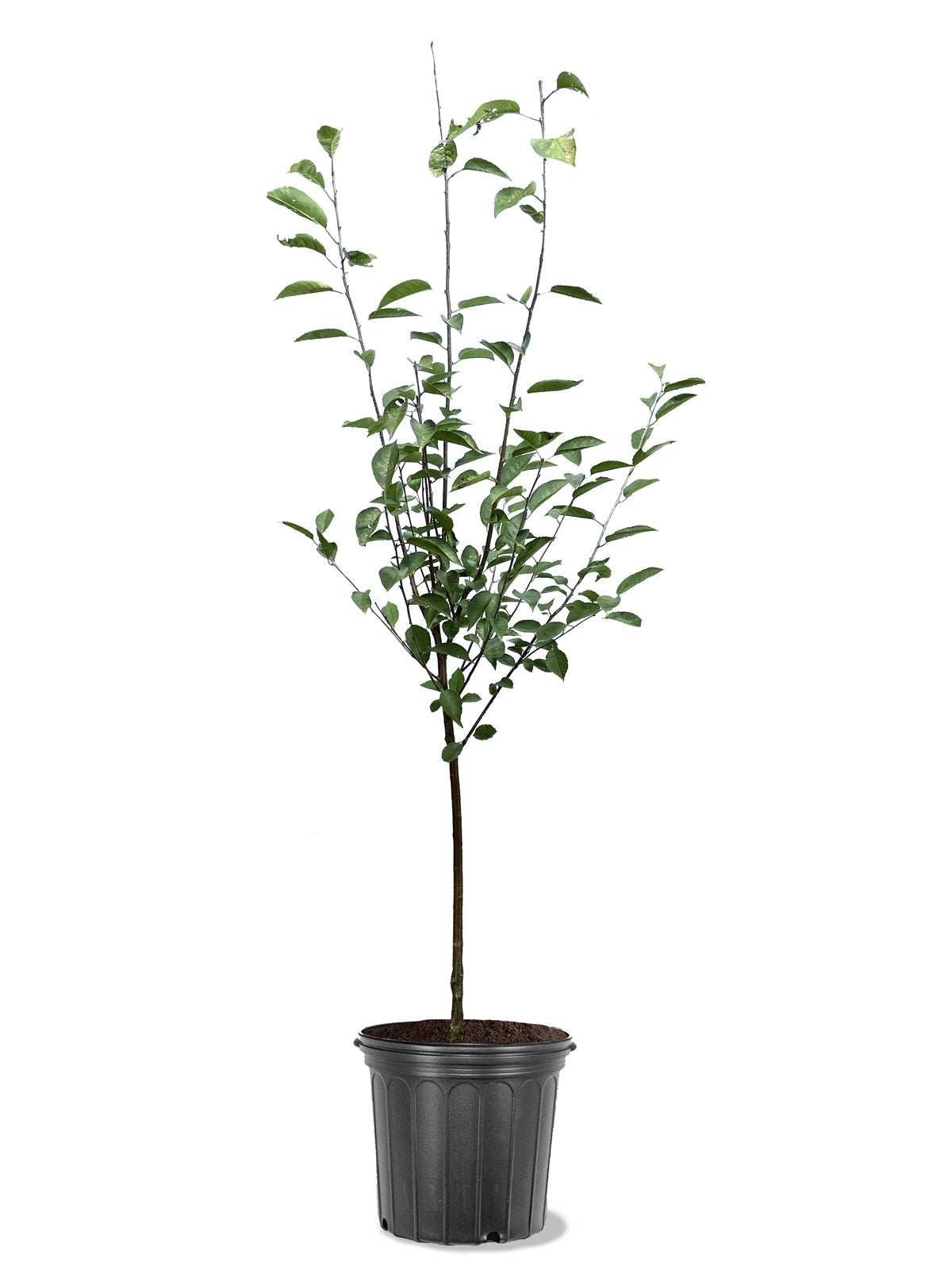
Planning your Cherry tree site
Choose a planting site for your fruiting cherry tree that receives 6–8 hours of full sun daily and has good air circulation to prevent disease. Ensure the soil is well-draining, loamy, and slightly acidic, with a pH of 6.0–7.0, amending it with organic matter if necessary. Avoid frost-prone low spots and select a location with enough space for the tree's mature size—20–25 feet for standard varieties or 10–15 feet for dwarfs. For sweet cherries, plant at least two compatible varieties nearby for cross-pollination, while sour cherries are often self-pollinating. Protect young trees from strong winds for the best growth and fruit production.
Soil Prep for Your Cherry Tree
It’s time to start digging! First, you will need to dig a hole three times the width of the size of the pot, and just as deep as the root ball. The soil at the planting site should be well-draining and loamy, with a slightly acidic to neutral pH, ideally between 6.0 and 7.0. Amend heavy clay soils with organic matter, such as compost or well-rotted manure, to improve drainage and aeration. In sandy soils, incorporate organic material to enhance water retention and nutrient availability. Test the soil before planting to ensure it meets the tree's needs, and consider adding a balanced fertilizer if necessary.
When selecting the planting site, also plan for the tree's mature size. Sweet cherry varieties can grow up to 30 feet tall and wide, while dwarf or semi-dwarf varieties typically reach 12–15 feet, making them more suitable for smaller yards or container growth. Maintain adequate spacing between multiple trees—usually 20–25 feet for standard trees and 10–15 feet for dwarf varieties—to prevent overcrowding and competition for resources.
Additionally, take pollination into account. Many sweet cherry trees require cross-pollination from a compatible variety to set fruit, so plan to plant at least two different varieties nearby if cross-pollination is needed. Sour cherry trees, on the other hand, are often self-pollinating but will still benefit from the presence of another tree for higher yields. Finally, ensure the site has protection from strong winds, which can damage young branches and blossoms, by planting near a windbreak or fence without obstructing sunlight. Thoughtful site selection and preparation will lay the foundation for a healthy, productive cherry tree.
Fertilizer for Cherry Trees
Fertilizing is an excellent way to replenish the nutrients in your soil, especially nitrogen. Nitrogen encourages green vegetative growth, which is exactly what you want to promote before your plum tree reaches its fruit-bearing years. Perform a soil test before planting to identify soil factors, such as pH that may cause certain nutrient deficiencies.
Nitrogen, phosphorus/phosphates, and potassium/potash are the “big” macronutrients cherry trees need to grow normally. They are present in healthy soil, but may be added when soil is deficient. Nitrogen is the nutrient most used by growing cherry trees; it moves throughout the soil, is leached off by normal growth and must be replaced by synthetic or organic compounds. The main source of nitrogen is decaying organic matter. Signs of macronutrient deficiency in cherry trees include reddish or pale colored leaves, narrow or shrunken leaves and dead spots on leaves.
Cherry trees also need micronutrients in the soil, which help make the macronutrients available to the tree. For example, molybdenum helps fix nitrogen to the soil. Copper and zinc prevent color mottling and misshapen leaves. Calcium is another essential micronutrient that cherry trees thrive on that improves leaf and fruit quality. The easiest way to add micronutrients is by adding aged compost or a good, balanced fruit tree fertilizer that states micronutrients are part of the formula.
WHEN TO FERTILIZE CHERRY TREES:
In USDA Zones 8-9: Fertilize 1x a year— in early March
In USDA Zones 6-7: Further north, fertilize 1x a year in March or after the buds break.
ALL USDA Zones: NEVER fertilize after July 1 as this will start new growth too late in the year and lead to frost damage.
Chemical or organic, whatever you may choose, make sure that it contains iron, zinc, manganese, magnesium, molybdenum, copper and boron. These elements are crucial to the plants growth. Application rates may vary; see chart for guidance.
|
5-10-10 or 10-15-15 |
Newly planted: 1/2 cup of 5-10-10 in the early spring; 2-12 years: Fertilize 1x a year 1/2 cup of 10-10-10 for each year of the tree (up to 12 years) in early spring |
|
Espoma Citrus Tone (Organic) |
6 cups for 1 year old 10 cups for 2 year old (4-6 ft) 18 cups for 7-9 ft tree 24 cups for tree over 9 ft |
Water For Cherry Tree
Unless your cherry trees are growing in an area where irrigation is usually needed for growth (desert areas, drought areas, containers, etc.), you probably won’t need to water your cherry trees more than what the rain naturally provides after the first growing year. Until then, follow these guidelines to get your new cherry trees off to a great start.
If the growing season brings about an inch of rainfall every 10 days or so, you shouldn’t need to provide any additional water; however, if it gets really dry in a week’s time, you can give your young cherry tree a good, thorough soaking. The best way to do this is to let your garden hose trickle slowly around the root zone. This gives the water a chance to soak in and down to the roots instead of running off over the soil surface. You can also use a soaker hose to water several trees at once. Give your cherry tree enough water to soak the ground all around the roots.
It’s important to note that, even if you’re in the midst of a “brown-lawn drought”, you shouldn’t water too much. Once every 7- to 10-days (or even once every two weeks) is plenty. Worse than dry, thirsty roots are waterlogged, drowning roots.
Although a little depression in the soil helps by preventing runoff during growing-season watering, it’s important to bring the soil around the tree up to the level of the surrounding soil for the winter. If this settled soil is not filled in, water could freeze around the trunk and injure the tree.
Pruning Cherry Trees
Pruning fruiting cherry trees is vital to their health, structure, and productivity, helping to shape the tree, promote airflow, and ensure optimal sunlight exposure. The best time to prune is late winter or early spring while the tree is still dormant, as this reduces the risk of disease and encourages vigorous growth in the new season.
Begin by removing any dead, damaged, or diseased branches to prevent pests and infections from spreading. Next, focus on thinning out crowded areas to allow light and air to penetrate the canopy, which helps prevent fungal diseases and improves fruit quality. Remove any branches growing inward or crossing over others, as these can hinder growth and create weak spots in the tree's structure.
For young trees, pruning helps establish a strong central leader or an open-center shape, depending on the desired form. Mature trees benefit from selective pruning to maintain their shape and size while encouraging new growth and fruiting spurs. Avoid cutting back more than 25% of the tree in one season, as over-pruning can stress the tree and reduce yields. Always use sharp, sterilized tools to make clean cuts, and consider applying a pruning sealer to larger wounds to minimize the risk of infection. Regular pruning, done thoughtfully, ensures a healthy, productive fruiting cherry tree for years to come.
Sweet Cherry vs. Sour Cherry
Sweet Cherries:
- Fruit Qualities: Sweet cherries are larger, juicier, and have a rich, sugary flavor. They are ideal for eating fresh, adding to salads, or using in desserts where sweetness is key.
- Growth Habit: Sweet cherries tend to grow taller and have a more upright, vigorous growth pattern. They may require more frequent pruning to control size and maintain an open canopy.
- Pruning Goals: Focus on shaping the tree for good airflow and sunlight penetration. Sweet cherries are prone to diseases like bacterial canker and brown rot, so maintaining an open canopy is essential.
- Fruiting Spurs: Sweet cherries fruit on older wood, so avoid heavy pruning of fruiting spurs. Light annual pruning is usually sufficient once the tree is mature.
- Pollination Needs: Most sweet cherry varieties are not self-pollinating and require a compatible variety nearby for cross-pollination.
Sour (Tart) Cherries:
- Fruit Qualities: Sour cherries are smaller, firmer, and have a tangy, tart flavor. They are perfect for pies, jams, preserves, and other baked goods where their acidity balances sweetness.
- Growth Habit: Sour cherries are typically smaller and more bush-like, making them easier to manage. They usually require less pruning overall.
- Pruning Goals: While still important, pruning for sour cherries can be less intensive. Focus on removing dead or diseased wood and maintaining the tree's shape.
- Fruiting Spurs: Sour cherries fruit on younger wood, so pruning may involve encouraging new growth to keep fruit production steady.
- Pollination Needs: Most sour cherry varieties are self-pollinating, which makes them more adaptable to smaller gardens with limited space.
Shop our collection of cherry trees and have them shipped right to your door!

